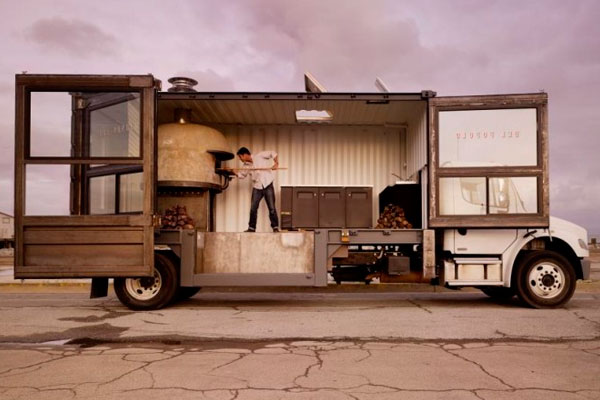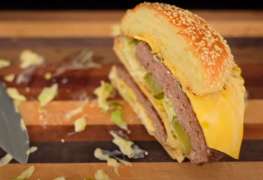 For the last several years, we’ve watched the rise of the food truck from delicious hot dog carts to taco wagons and to an all-out gourmet battle driven by the food-truck followers you see today. The variety of food trucks is never-ending as well – from ethnic to fusion cuisine, cupcakes and ice cream and everything in-between.
For the last several years, we’ve watched the rise of the food truck from delicious hot dog carts to taco wagons and to an all-out gourmet battle driven by the food-truck followers you see today. The variety of food trucks is never-ending as well – from ethnic to fusion cuisine, cupcakes and ice cream and everything in-between.According to a source, more than 2.5 billion people eat street food from a food truck every day!
Have you ever wondered where the food truck phenomenon originated and how it became so popular? We decided to do some historical digging to find out. In this blog post, we’ll chronicle the rise of the American food truck. Grab your coffee and hang on; it’s a wild ride…
Humble Beginnings in Rhode Island
According to the NY Times, the entire food truck industry can be traced back to the year 1872 when Walter Scott, a vendor, parked his covered wagon in front of a local newspaper office in Providence, Rhode Island. Having pre-cut windows in the wagon, he sat on the inside box and sold sandwiches, pies and coffee to the newspaper’s hard-working pressman and journalists.
Word soon spread, and the night-time lunch wagon was born. In 1888, a young Massachusetts lunch-counter boy named Thomas H. Buckley built himself a lunch wagon, and he called it the Owl. This play on words was a reference to the nocturnal hours diners kept. Buckley oversaw its construction and went on to manufacturer a series of successful lunch wagon designs. His best-known model was the White House Café.
Within 10 years, Buckley’s wagons were in 275 towns across the United States. He roamed around looking for towns that could support one of his wagons. If no one was interested in purchasing one, he set himself up under the direction of a capable, handpicked manager. It’s been said he might have established the first nationwide chain. He is fondly referred to as the “Original Lunch Wagon King.”
Buckley’s wagons often had colored windows, mahogany woodwork, ornaments, sinks, refrigerators and cooking stoves. He also introduced fancy wagons with silver and brass embellishments, plate-glass mirrors and gorgeous mosaics.
After his early death at the age of 35 in 1903, the Worcester Lunch Car Company came into business. Their lunch wagon later morphed into the first non-moving dining car in the early 1900s turning into the diner as we now know it.
Other Proposed Beginnings
The Texas chuck wagon is another predecessor of the modern-day food truck. As the beef market expanded after the American Civil War, cattlemen were on the road for months at a time. The chuck wagon arose from the need to feed these men. The originator of the chuck wagon “food truck” was Charles Goodnight, a cattle herder. In 1866, he took an old army wagon and built shelving and drawers inside. He stocked it with dishes, spices, pots/pans and easy-to-preserve food. From this chuck wagon, he served food to the men.
In the 1950s, the U.S. Army authorized mobile canteens to be operated on army bases to provide food to the people stationed there. For years after, mobile food trucks called roach coaches served construction sites and other blue-collar professions.
Regardless of the source, our modern day food truck evolved from a need to feed hungry people in a less than stationary manner. As the food trucks evolved, their appearances improved, and they began to offer more variety.
2008: The Boom Begins
Although food trucks in some form or another existed well before the 21st century, the heyday of what we now know as the food truck phenomenon began in Los Angeles in 2008. LA-based entrepreneurs, Mark Manguera and Caroline Shin, along with chef, Roy Choi, were among the first food truck owners to receive national attention with a food truck (theirs is Kogi BBQ).
They combined Korean BBQ and Mexican tacos in a tasty, inexpensive and unique way that California customers appreciated. They crossed social and economic boundaries introducing LA to convenient, top-quality dishes, something unexpected since traditional food truck fare may have been viewed as unhealthy and greasy. They then capitalized on social media to build a fan base for their food truck.
Other people on the west coast, and soon after on the east coast, noted Kogi BBQ’s success. Chefs were scouring used car lots to find trucks to convert into mobile restaurants. With these new converted kitchens on the road, the modern LA food truck started a landslide of trucks across America.
A Product of the Recession
Following Kogi BBQ’s success, the economic downturn and recession in 2008 helped spur on the success of the food truck. The recession forced many highly qualified and talented chefs out of the traditional restaurant and onto the road leading to instant access of their food inventions.
It’s interesting that food trucks experienced a boom just as the economy started to nose dive. Many restaurateurs who were hesitant to take on a new restaurant turned to mobile canteens as a less expensive way to sell food and reach customers.
At the same time, smartphones were exploding onto the scene with incredible new options, and social media allowed food truck owners to market their wares cheaply and efficiently. The Internet and social media played, and continues to play, a vital role in making food trucks accessible to wide areas of communities.
Food Trucks were so popular across America that in 2011, popular go-to guide, Zagat, even added a new category called “Food Truck Reviews.”
Food Truck Nation Continues to Thrive
Why are food trucks so popular? We are a nation of instant gratification and precious little time. Hunger and time constraints have provided a foundation for the food truck. Additionally, food trucks offer diverse food to people looking to try something new. Mobile phones and social media have made marketing inexpensive, while having a unique food truck concept allows inventive owners to stand out.
Many reasons exist for the popularity of the modern food truck. And, just as in Rhode Island nearly 150 years ago, food truck operators are still setting themselves apart with signature dishes. Food truck owners have carved out a niche with unique, hybrid cuisines. Food aficionadas now have the ability to search for a particular truck, cuisine or dietary need using the Internet.
Where will the rise of the food trucks take us?
The first food truck began with the covered wagon and has evolved into a high-quality, colorful restaurant on wheels. Chefs all over the United States are finding success with the food truck. They are free to develop hybrid, unique cuisines to an ever-eager audience.
Are food trucks done evolving? Is their rise over? We don’t think so. Food truck owners are always looking for ways to adapt to their customers’ needs and tastes. New markets are presenting themselves at rapid rates.
While the food truck was once only found at fairs and outside downtown offices, you can now find them outside airports, schools, markets and much more. The rise of the food truck has seen them working at special events such as weddings, school dances, birthday parties and public gatherings. The possibilities for market share and cuisine are endless as is the potential of the American food truck.
Source: restaurantengine.com








Leave a comment